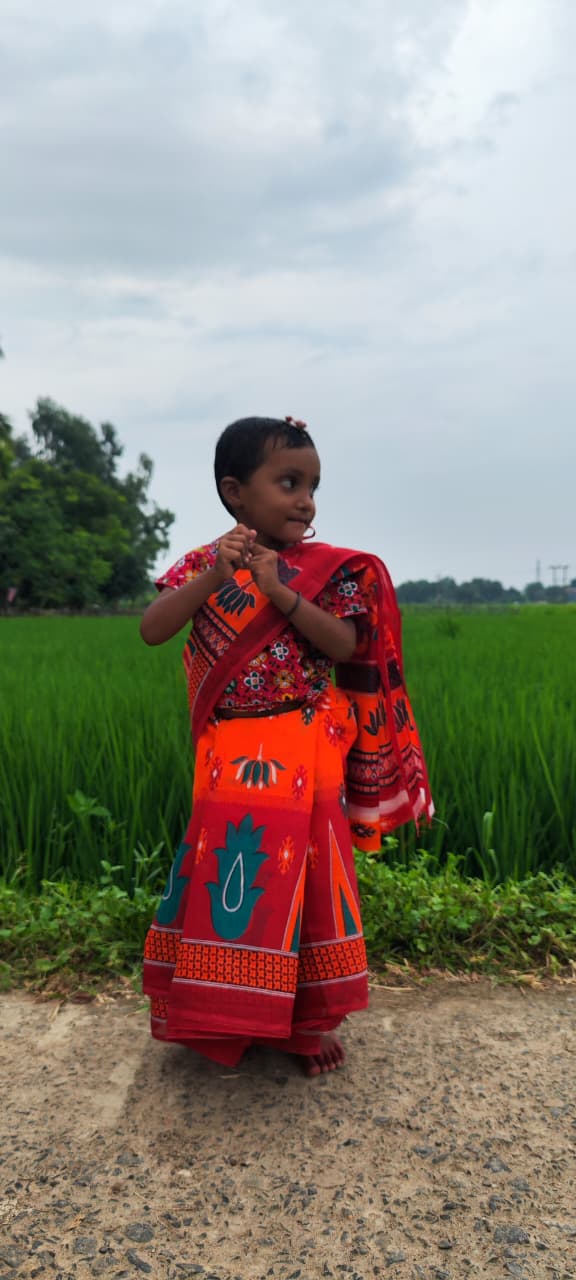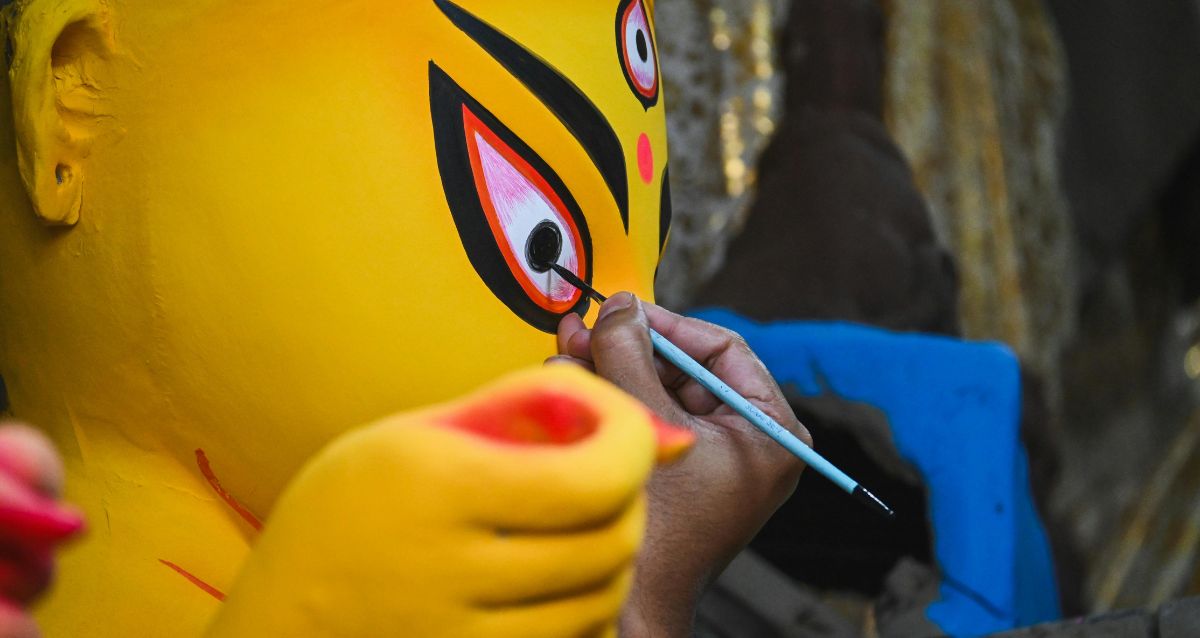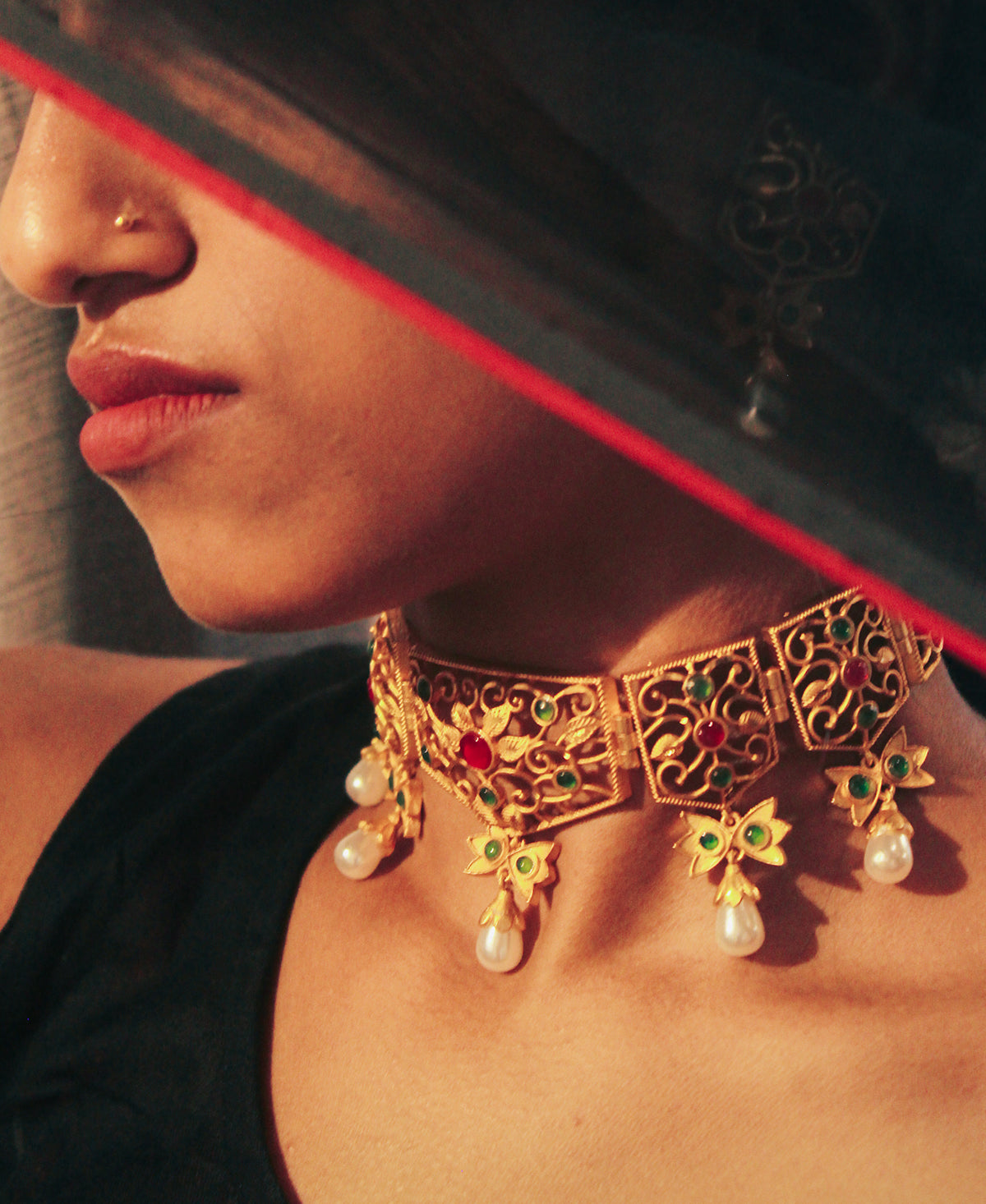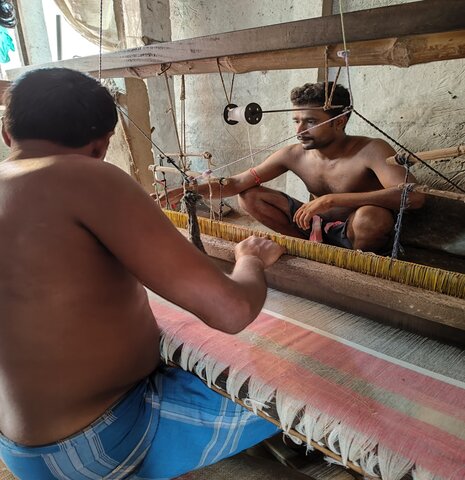They say that certain experiences in life shape you, and while I agree with the saying to a certain extent, an experience on an evening the week before cemented my belief in it. The story feels like a page torn out of Bengal’s timeless folk tales, in its raw, unfiltered form.
And that’s exactly how I shall narrate it to you; authentic and true-to-life.
I was at my loom, eager to return home within a stipulated time. The journey was long and somewhat arduous. I had to catch a bus and then a train by 5:30 pm. Missing the latter would mean waiting till 7:15 pm for the next one to arrive, and I couldn’t possibly wait that long. Time was rushing by as the clock on my wrist pointed, and I knew I had to hurry if I were to make it on time.
At around 5:00 pm, I finally managed to step out of the loom. With my weaver dada beside me, we set out for home. We are almost the same age, but tend to call each other dada out of habit, affection, and that easy kinship which only village life knows. We had barely managed to reach the mud road when time came to a still.
In front of us, a young girl, no more than five years old, gleefully darted across. She was draped in a red printed saree, clearly belonging to her mother. Although worn quite clumsily, she was carrying it with immense pride. Under the soft evening light, the red of her saree gleamed against the monsoon-green paddy fields, seeming like a vermilion bindi on Bengal’s forehead
In that fleeting moment, the thought of missing my train, the bus stand and the hurry to reach home faded. Her innocence kept me engaged, as I noticed her pace quicken to the call of her friends. With gleeful laughter echoing through the street, she rushed off towards Vadu Parab.

In several places across rural Bengal, like Purulia, Bankura, Birbhum, Bardhaman and parts of Paschim Medinipur, young unmarried girls gather in the month of Bhadra (around mid-August to mid-September) to celebrate through singing and dancing, honouring the folk deity Bhadu or Vadu. Considered a beloved daughter of the village folk, the festivity often involves singing around a simple clay pot, with verses praising Bhadu’s beauty, sorrow, stolen love, and her vanishing into the sky.
The rhythm of Bhadu gaan carries both joy and longing, echoing through courtyards and mud roads, linking one village to another. It is not a grand ritual, not Vedic; it is raw, intimate and talks about the land’s rich folklore. It is Bengal’s heart, beating in chorus with those that shape her very being.
Capturing the image of the little girl in my memory, I asked her mother if I could take a photo. She shyly smiled, nodding from behind the threshold, as though blessing me to capture her daughter’s innocence in all its glory.
As the lights in the sky began to fade and dusk slowly settled, I captured a picture of a child, wrapped in her mother’s saree, glowing with the pride of tradition, her eyes dancing with excitement as she joined her sisters in celebratory laughter and song.
That day, on that muddy rural road, amid the fleeting passage of time, with thoughts of timetables and rushing trains, I realised I’d accidentally stumbled upon something meaningful and poignant; a living festival of belonging, where threads of handloom, childhood, and folk memory are woven together into the fabric of Bengal’s soul. As I set out to return home, the eagerness to return home having faded a little, I couldn’t help but ponder the thought that the role of a saree is much more than just a piece of clothing. Along with being an adornment, it carries within itself stories, emotions, traditions, and the pride of our culture. One that shapes our very being.






